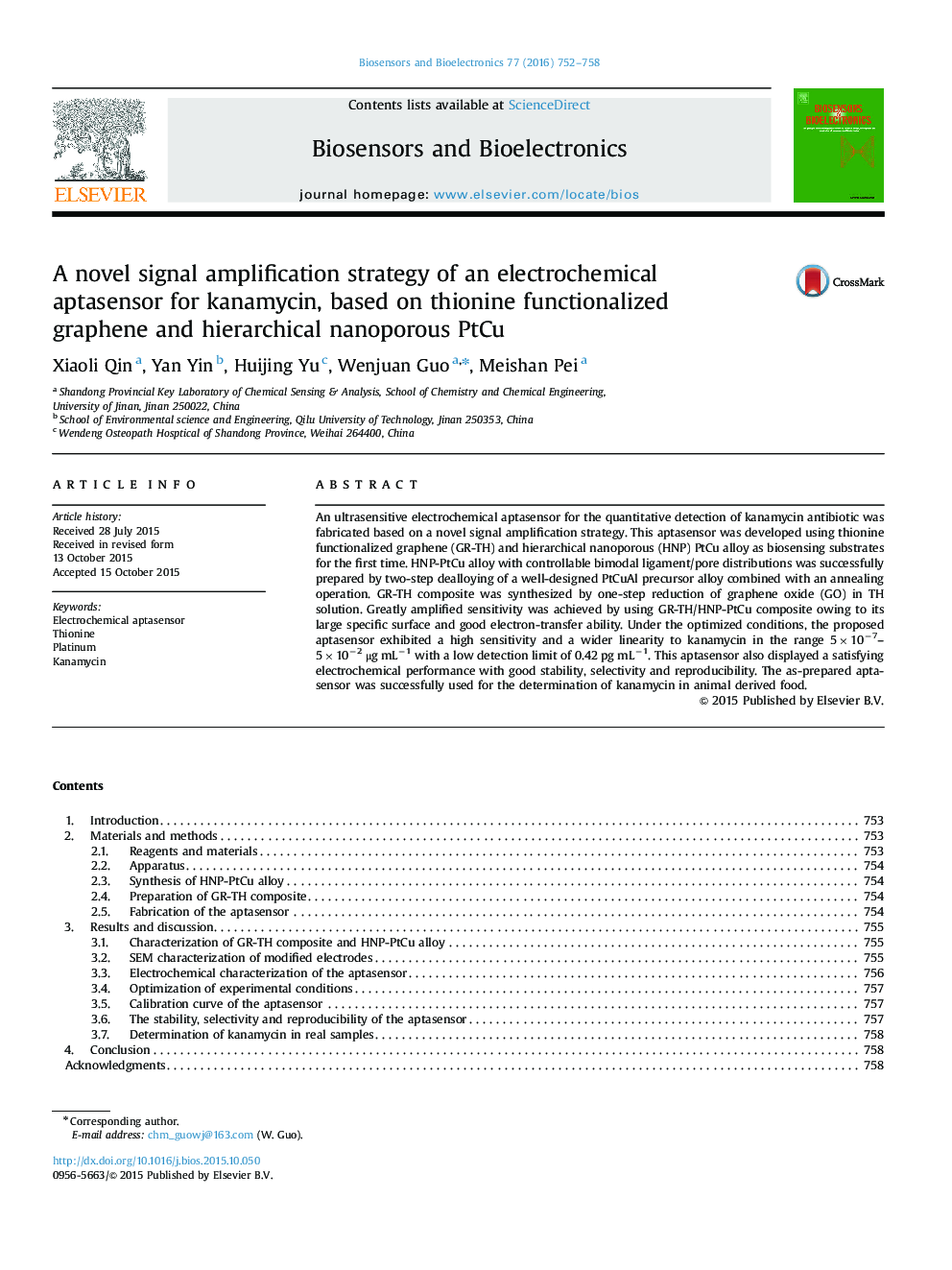| Article ID | Journal | Published Year | Pages | File Type |
|---|---|---|---|---|
| 7231176 | Biosensors and Bioelectronics | 2016 | 7 Pages |
Abstract
An ultrasensitive electrochemical aptasensor for the quantitative detection of kanamycin antibiotic was fabricated based on a novel signal amplification strategy. This aptasensor was developed using thionine functionalized graphene (GR-TH) and hierarchical nanoporous (HNP) PtCu alloy as biosensing substrates for the first time. HNP-PtCu alloy with controllable bimodal ligament/pore distributions was successfully prepared by two-step dealloying of a well-designed PtCuAl precursor alloy combined with an annealing operation. GR-TH composite was synthesized by one-step reduction of graphene oxide (GO) in TH solution. Greatly amplified sensitivity was achieved by using GR-TH/HNP-PtCu composite owing to its large specific surface and good electron-transfer ability. Under the optimized conditions, the proposed aptasensor exhibited a high sensitivity and a wider linearity to kanamycin in the range 5Ã10â7-5Ã10â2 μg mLâ1 with a low detection limit of 0.42 pg mLâ1. This aptasensor also displayed a satisfying electrochemical performance with good stability, selectivity and reproducibility. The as-prepared aptasensor was successfully used for the determination of kanamycin in animal derived food.
Related Topics
Physical Sciences and Engineering
Chemistry
Analytical Chemistry
Authors
Xiaoli Qin, Yan Yin, Huijing Yu, Wenjuan Guo, Meishan Pei,
